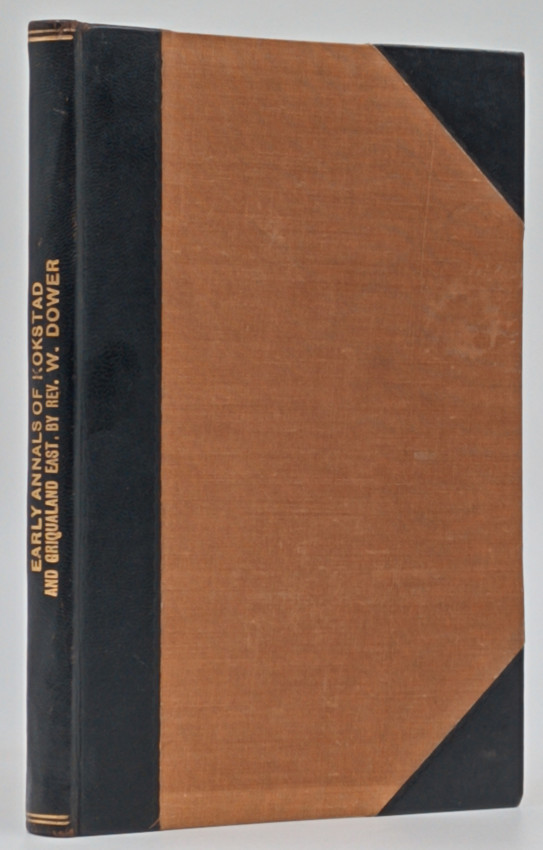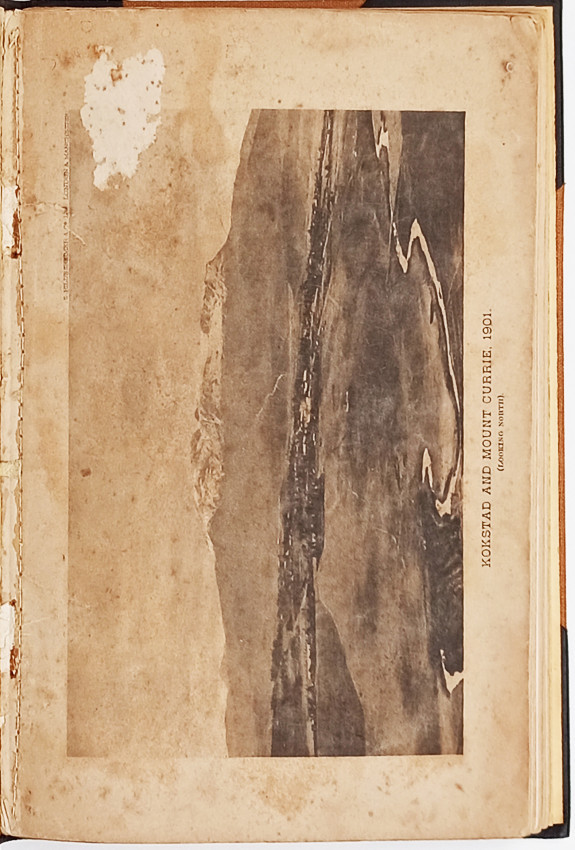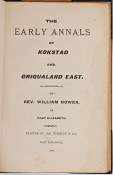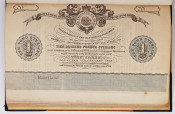130 pages, 2 frontispieces, 27 portraits, photographs and illustrations, light foxing mainly on the preliminary and end pages, the frontispieces and final plate are soiled and foxed but the text is clean and free of foxing, bound without the original light green paper wrappers in recent half brown leather with cloth sides, Ex libris bookplate of I. & F.W. Hosken on the front paste down endpaper, sold at the Welz auction of the Hosken library in September 2001.
With the Tien Duizend Pond Sterling Note bound in between pages 16 - 17.This extremely rare Griqua bank note (Government of New Griqualand - Gouvernement van Nieuw Griqualand) was never issued. Copies of the original note can only be found in the Rev William Dower's book "The Early Annals of Kokstad and East Griqualand" (published 1902).Scott Balson, https://www.tokencoins.com/gr04.htm
Mendelssohn (Sidney) South African Bibliography vol.1 page 483 -484: 'A pamphlet on the Griquas, their old and new country, and the progress and rise of the white settlers among them. The author, who was one of the founders of the town of Kokstad, in Griqualand East, gives an account of the early history of the tribe. Mention is made of the fact that the battle of Boomplaats was fought by the British mainly to defend the rights of the tribe against the Free State Boers. Nevertheless, in the confusion and disorder brought about by the retrocession of the Orange River sovereignty, the Republic acquired a large part of the country, and arrangements had to be made by Sir George Grey for the repatriation of part of the tribe in the territory then known as "Nomansland," now Griqualand East, situated between British Kaffraria and Natal.
'In the year 1874 Sir Arthur Cunningham, General in Command at the Cape, paid it a visit, and a little later on Sir Henry Barkly arrived on the scene, and it was then decided to annex the territory to the Cape Colony. After some little protest the inhabitants seem to have acquiesced, and Adam Kok retained his title, together with a pension of £1000 a year, which he lived to enjoy for five years. At the time of the annexation, land was worth about threepence an acre, but the security of an English title soon sent prices up, and in the rapid rise the majority of Griquas sold their land. After 1876 the town of Kokstad appears greatly to have improved, business became brisk, and property rose considerably in value.
'A small native outbreak occurred in 1878, which was soon repressed; but the Basuto War, which commenced later on in the year, was a source of serious alarm to the inhabitants. The author makes some important statements with regard to the dispute between the British and the Free State on the subject of the possession of the diamond fields, and observes that "nearly every fact and statement confirmed Waterboer's claims."'
- Overall Condition: A good copy
- Size: 8vo (220 x 140 mm)
- Sold By: Clarke's Africana & Rare Books
- Contact Person: Paul Mills
- Country: South Africa
- Email: [email protected]
- Telephone: 021 794 0600
- Preferred Payment Methods: Visa & Mastercard via PayGate secure links and Bank transfers.
- Trade Associations: ABA - ILAB, SABDA




















